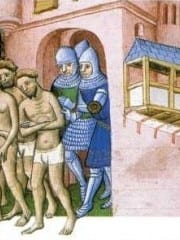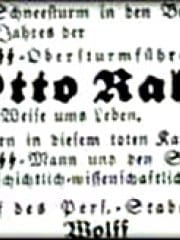Christian Bernadac
The Cathar Myth: Church of the Holy Grail
The first to create the Cathar myth referred to in The Da Vinci Code was Napoléon Peyrat, a bourgeois and talented fabulist, concocted in the 1870s an account of the Cathars, which, though largely made up, still passes as truth in esoteric circles today . Another equally influential is Jules Doinel (Jules-Benoît Stanislas Doinel, a Freemason and Spiritist (See "The Making of Spiritism" in the first part of Da Vinci Code Matrix). He claimed that Gnosticism was the true religion behind Freemasonry. Thus it is in the second half of 19th century France that the Cathar-myth was born, to which Joseph Péladan was the first to add to this a mention of the Holy Grail in his short treatise From Parsifal to Don Quixote, the secret of the Troubadours.
Rumors around the Otto Rahn death
Initially it was stated that the cause of Rahn's death was either "exposure" or "pneumonia", notwithstanding the fact that he was young and vigorous and an experienced mountain climber who had once spent an entire snowbound winter in the Alps.
A subsequent account of Rahn's demise related that he drank a bottle of rum, fell asleep in the snow and froze to death while climbing a mountain known as the "Wilde Kaiser". (Die Welt Newspaper, May 1:t, 1979)
Later rumors claimed that Rahn had committed suicide by swallowing a cyanide capsule while on the mountain.
Another report by Gerard de Sede ("The Treasure of the Cathari", 1966) postulates that Rahn did not die on a mountain top in 1939, but was arrested and imprisoned in solitary confinement at the Dachau concentration camp. He was beheaded in 1945 just before the compound was liberated by American forces.
Raiders of the Lost Grail
Berlin between the wars was a city known throughout Europe for its bohemian subculture of young intellectuals. Amongst the personalities who hotly debated the many modernist “isms” that were fracturing the old ideological certainties which had glued together the 19th century, few individuals were more colourful than a dark-haired, green-eyed young man named Otto Wilhelm Rahn. His gaunt figure, swathed in characteristic black coat and fedora, casts a long shadow out of those twilight years, a ‘great silhouette’ around which the most extravagant myths accrued. He was variously said to be a Mason, a Rosicrucian, a Luciferian, an agent of the Thule Gesellschaft, an initiated Cathar and even the leader of an obscure, international secret society. As author Philip Kerr puts it, Rahn’s contemporaries might not have been surprised to see “the Scarlet Woman and the Great Beast come flying out of the front door” of his apartment on Tiergartenstrasse. One of his Nazi peers in Heinrich Himmler’s Black Order remarked in an internal memo that he “half suspected Rahn of being in league with the little people”. To this day, it is widely believed that this enigmatic young man knew the whereabouts of one of the most sacred relics in all Christendom – the Most High Holy Grail. But the truth is stranger still…




Recent comments
13 years 41 weeks ago
13 years 42 weeks ago
13 years 42 weeks ago
13 years 42 weeks ago
13 years 45 weeks ago
13 years 51 weeks ago